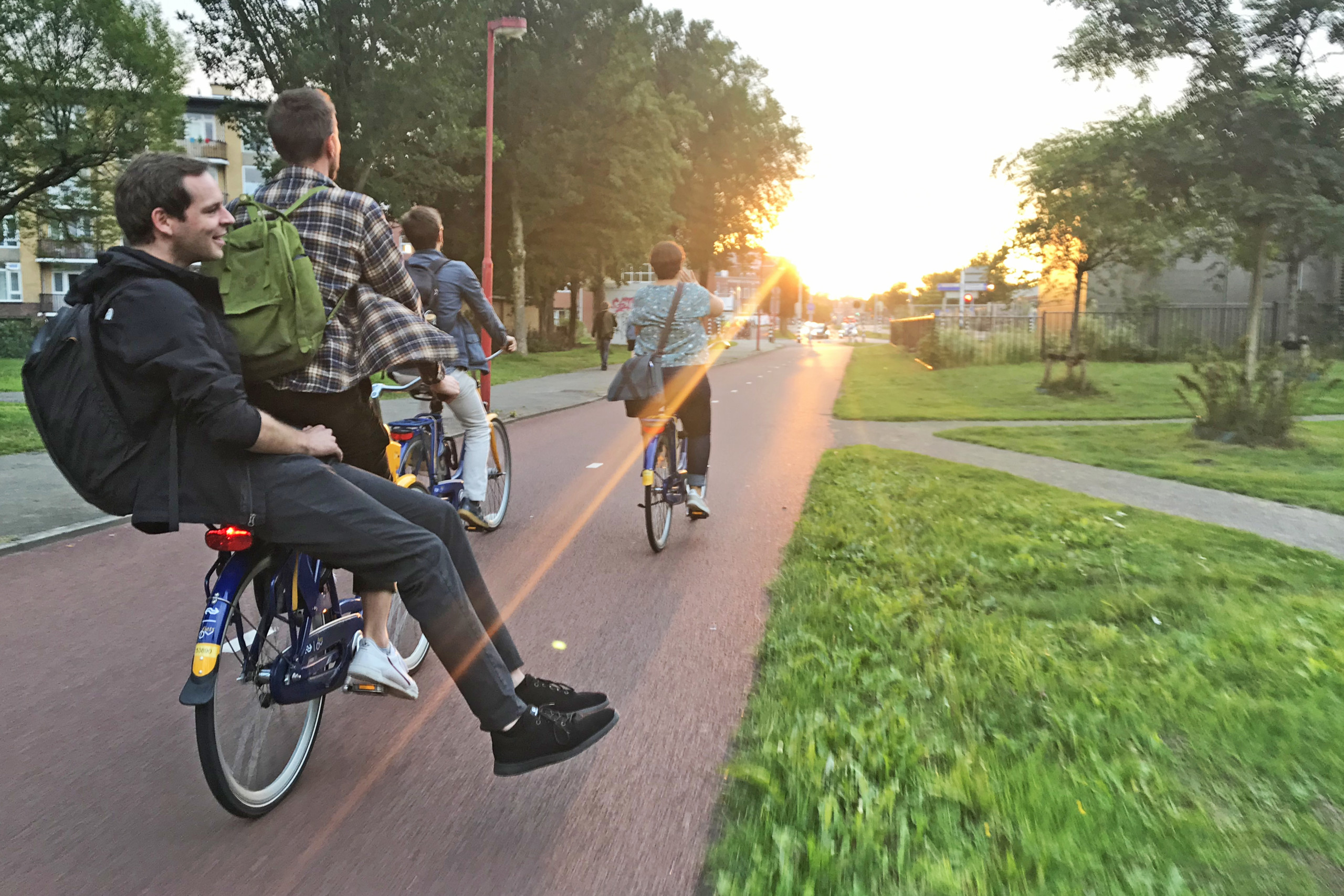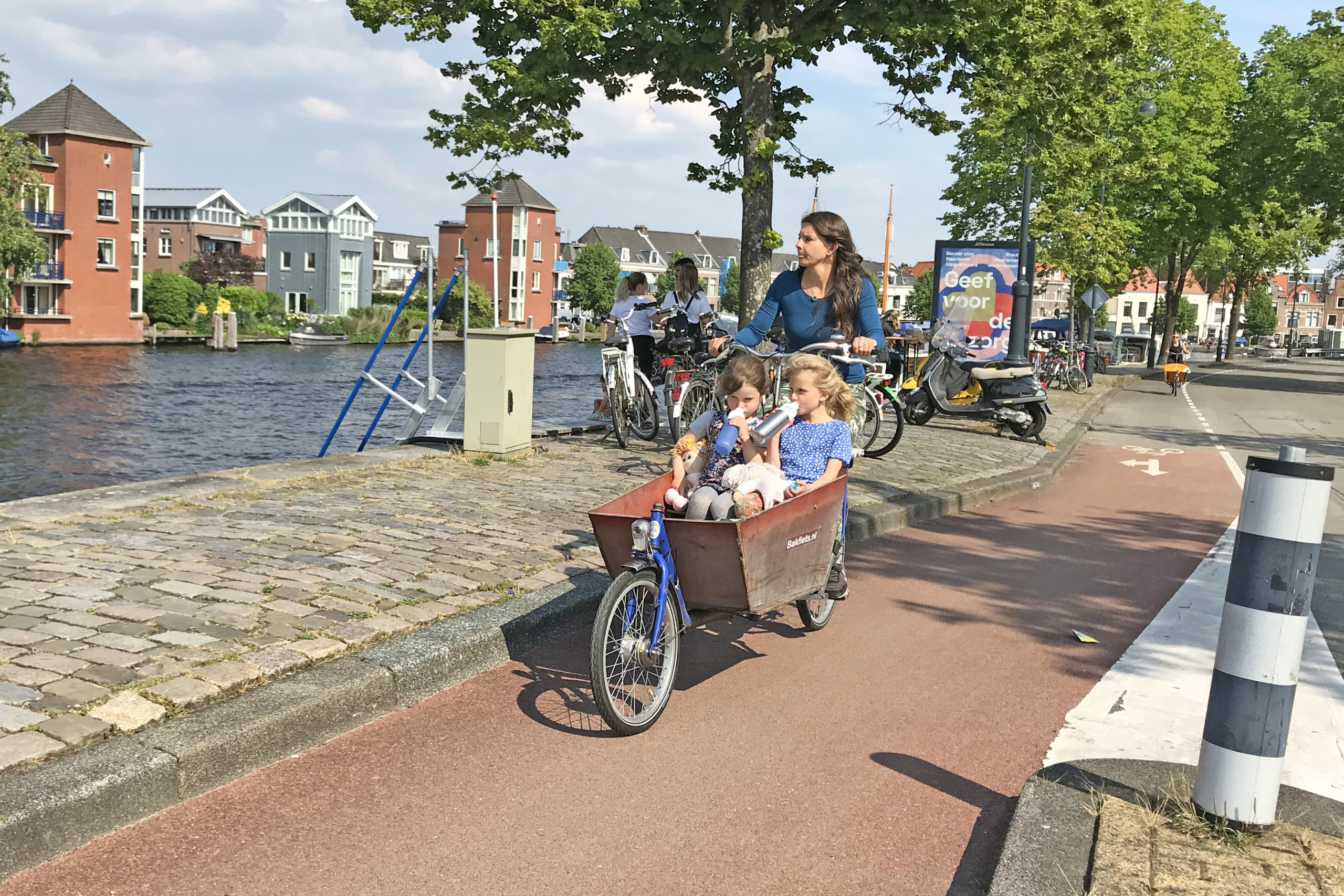COVID-19 / Cycling / Mobility / Pedestrians / Technology / Urban Mobility Design / Walking
Rethinking the Smart Mobility Hype: A call for returning to ‘basic-tech’
As communities around the world grapple with the new realities of COVID-19, cities are taking a variety of steps to encourage physical distancing such as improving and widening pedestrian infrastructure and installing temporary bike lanes. Looking at the discussions surrounding mobility only just last year, these infrastructural measures seem far less ‘sexy’ than the high-tech, ‘smart’, ambitions of 2019. Smart Mobility seems to have been put on the back-burner by many cities, turning their focus back to the basics of transportation: walking and cycling.

Put bluntly, autonomous vehicles and new high-tech micro-mobility vehicles are not going to offer mobility solutions for all. They will largely remain merely for the fortunate few who can afford these luxury services. This has become all the more clear when so many people have suddenly found themselves unemployed or in times of economic hardship. Still, this says something quite fundamental about the overall mobility needs of a city, its residents, and what role these needs play in achieving a resilient city.
It goes that without saying that a real-time MaaS (mobility-as-a-service) app, or any other smart mobility innovation, is not going to solve our current mobility challenges if the basic infrastructure and transport services are already lacking. Such an app is of no help if it tells you your only transport options are to wait forty minutes for a bus at a stop 600 metres away, or pay (often significantly more) for an Uber to come straight to your door, or even rent a shareable electric scooter placed somewhere in your neighbourhood. Not only does this do absolutely nothing for low-income users, it is also not a sustainable nor space efficient solution to contemporary mobility challenges.
Don’t get me wrong, smart-technologies absolutely have a role in the future of urban mobility, especially when they can foster modal shifts to active or public transport, as these are often the most affordable and space efficient options. And yes, since ‘time is money’, public transport can turn out to be more expensive than other options such as driving your own car or using a ride-hailing service. However, this should not be a reason to scrap public transport, cycling, or other active transport modes all together. Instead, it is a reason to improve them.
Before investing in advanced technological innovations such as autonomous, electrified, smart technologies, cities can do far more good, at a faster pace, and for a broader population by first investing in what I like to call ‘basic-tech’.

In the last century, this ‘basic’ level of technology has made huge leaps around the world, that is, for cars at least. From cobblestone to asphalt, guardrails, parking, and airbags, there are countless basic levels of infrastructure that we now entirely take for granted. At this point, it’s rare to come across a capital city nowadays that does not yet dedicate enormous sums of money and space to car infrastructure with the idea that they will make driving easier and more pleasurable. Compared to other modes of transport however, especially active modes such as cycling, they have not seen this same boom in basic levels of infrastructure.
This has become particularly noticeable during the Corona crisis. Ironically, as many avoid using public transport for fears of infection in crowded buses or metro cars, cities are beginning to realize that this only leads to crowding elsewhere, namely, on the road network. As they scramble to prevent city-wide gridlock, they are quickly realizing that they simply do not have the foundational infrastructure in place for ‘basic’ mobility. This is particularly evident for more vulnerable road users such as cyclists and pedestrians. Cars have their own network that they can trust and follow. When the network fails them, network operators are quick to the scene. If they can’t fix the problem they at least offer an alternative route. Yet the simplest of human actions, walking, or only slightly more complicated, cycling, rarely have a network for themselves, nevermind a place to make use of the car network.
Even still, city administrations are increasingly striving for “world class”, ‘smart’ solutions to mobility issues through the use of big-data, apps, sensors, and cameras. Meanwhile, basic infrastructure for walking and cycling, is non-existent, or inconsistent at best. Not only does this leave the the transportation network inflexible and fragile, dependent on only one or two modes of transport (if you count mass transit), it also scarcely leads to what most would consider a “world class”city.
Few come back from visiting another city raving about how wonderful it was to drive there. It’s the walks, the small neighbourhoods, the life on the street that people come for, that people remember. So, even if smart technologies offer solutions to reduce congestion in the overall road network, it’s the basic technologies that make a city a place not only where people want to visit, but also where people want to stay. After all, Anne Hidalgo won the Paris mayoral race not by touting the benefits of e-scooters and electric vehicles, but by committing to provide space for active transport – or rather, for people.
 ">
">Stephen Kurz
‘Though we are strongly influenced by our environment, effective urban design can help us make sustainable, healthy, and safe choices. Not because we’re more aware of our choices, but because we’re not. Good urban design makes the ‘right’ choice easy. To achieve this, I value non-traditional approaches to exploring and developing solutions to urban issues.’

